CARACTERISATION GEOGRAPHIQUE DE LA POLLUTION DE L’EAU DANS LES QUARTIERS DE L’ARRONDISSEMENT DE DOUALA 3E (CAMEROUN)
Douala est la ville la plus peuplée du Cameroun.
Sa croissance est à l’origine d’un étalement qui accroit les pressions sur les ressources en eau dont la dégradation se fait à la faveur de processus multiples, dans un contexte où l’assainissement liquide est problématique, autant pour l’évacuation et que le
traitement des effluents.
Les systèmes d’assainissement de la ville sont en effet très faibles et insuffisants, le mode le plus usité étant individuel et
caractérisé par l’utilisation généralisée de latrines souvent creusées jusqu’au niveau des nappes d’eau en affleurement.
Ces latrines sont reliées aux cours d’eau et canalisations aménagées, très sollicitées à l’occasion des pluies.
Cette situation interroge sur l’exposition et la forte prévalence des maladies liées à l’eau, au moment où la ville fait face depuis février
2022, à la cinquième épidémie de choléra en moins de vingt ans. Si rendre compte de la qualité de l’eau
repose très souvent sur une démarche de bio évaluation, que peut apporter l’analyse géographique en matière de caractérisation des pressions exercées sur cette ressource ?
Le présent travail met en évidence et caractérise la pollution de l’eau dans les quartiers de Douala 3è. Il s’appuie sur une approche
par Système d’Information Géographique et intègre les données issues d’une enquête quantitative effectuée auprès de 2637 ménages.
Il s’est ainsi agi d’élaborer un système d’indicateurs de risque et d’état de pollution de l’eau, partant d’une modélisation en
deux étapes.
La première a porté sur la sélection et la combinaison de facteurs de risque les plus représentatifs.
Cette combinaison a permis d’obtenir des critères à partir desquels l’Indice de Risque de Contamination Fécale a été généré.
La deuxième a porté sur une hiérarchisation des maladies hydriques.
Leur combinaison a permis de définir l’Incidence Conjuguée des Maladies liées à l’Eau.
Ce dernier critère associé au premier indice a permis d’obtenir le Taux de Contamination Fécale chez les enfants de moins de 8 ans.
L’indice et le taux ainsi obtenus permettent d’établir une corrélation entre les caractéristiques socioéconomiques et environnementales, les pratiques d’assainissement et le degré de contamination fécale très variable en fonction des quartiers.
Mots clés : urbanisation, ressource en eau, assainissement, risque, pollution fécale, Douala.
Abstract
Douala is the most populated city in Cameroon.
Its growth is at the origin of a sprawl which increases the pressures on water resources whose degradation takes place thanks to multiple processes, in a context where liquid sanitation is problematic, as much for the evacuation and the effluent treatment.
Sanitation systems in the city are indeed very weak and insufficient, the most common mode being individual and characterized by the generalized use of latrines often dug to the level of outcropping water tables.
These latrines are connected to the waterways and developed pipes, which are very busy during the rains.
This situation raises questions about the exposure and high prevalence of water-related diseases, at a time when the city has been facing since February 2022, the fifth cholera epidemic in less than twenty years.
If reporting on water quality is very often based on a bio assessment approach, what can geographical analysis bring in terms of characterizing the pressures exerted on this resource?
This work highlights and characterizes water pollution in the districts of Douala 3.
It is based on a Geographic Information System approach and incorporates data from a quantitative survey of 2,637 households. This involved developing a system of water pollution risk and state indicators, based on a two-step model.
The first focused on the selection and combination of the most representative risk factors.
This combination made it possible to obtain criteria from which the faecal Contamination Risk Index was generated.
The second focused on a hierarchy of waterborne diseases.
Their combination has made it possible to define the Combined Incidence of Water-related Diseases.
This last criterion associated with the first index made it possible to obtain the faecal Contamination Rate in children under 8 years of age.
The index and rate thus obtained make it possible to establish a correlation between socio-economic and environmental characteristics,
sanitation practices and the degree of faecal contamination, which varies greatly depending on the neighborhood.
Key words: urbanization, water resource, sanitation, risk, fecal pollution, Douala

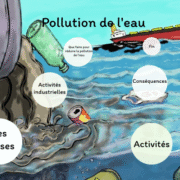 AAEA
AAEA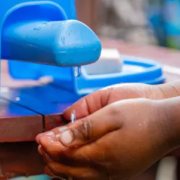 AFWASA
AFWASA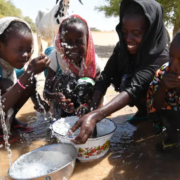 AFWASA
AFWASA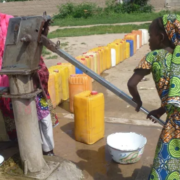 AFWASA
AFWASA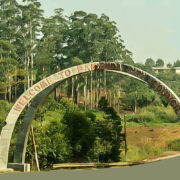 AFWASA
AFWASA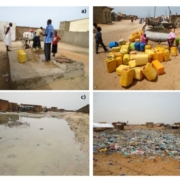 AAEA
AAEA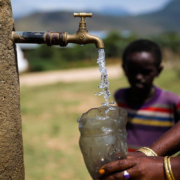 AAEA
AAEA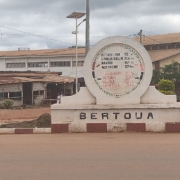 AAEA
AAEA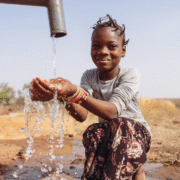 AAEA
AAEA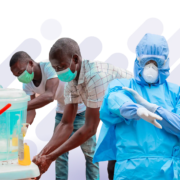 AFWASA
AFWASA